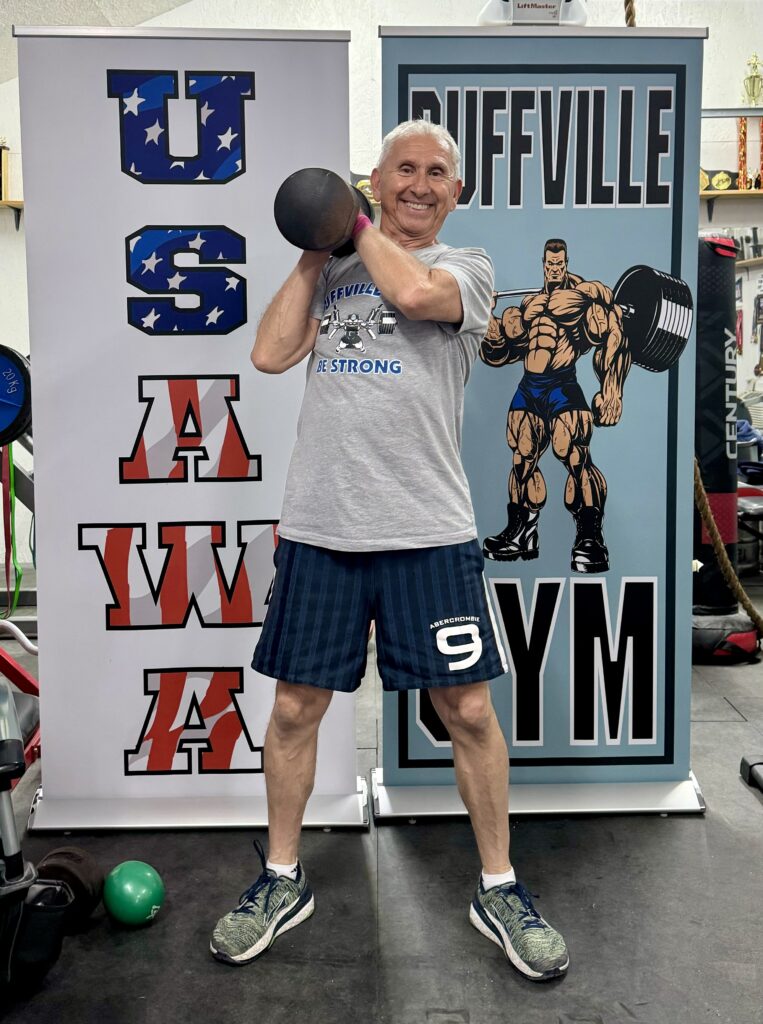Buffville cup III


By Denny Habecker
Where: Habecker’s Gym, Lebanon, PA
When: May 25, 2024
Weigh Ins: 10:00AM
Pick up to 5 lifts you would like to set or break records in.
Just let Denny know if you plan on attending: liftingliar@comcast.net
By Sanjiv Gupta
This article originally set out to ask whether age and body weight corrections are correlated and whether we are creating a super multiplier. It was also going to propose a means for women to compete with men. It has taken another turn.
Scoring Systems, Weight Classes, Age Classes in Strength Sports:
Beyond all-round, I participate in foot races where an overall male and female winner is determined by fastest time and male and female age group winners are determined by fastest time. All athletes run the same course. There is no factor in determining an overall winner. Unscientifically, gaining 1% of body fat, slows a runner down about 0.5%. Similarly, a runner can expect about a 0.5% decrease in performance per year from ages 40-70, accelerating after age 70 and accelerating even more after age 90.
I also participated in Highland Games in Colorado. Here we use a decathlon style scoring system with Pro, Amateur, Lightweight, Master and Master 65+ categories for men and women. An athlete could fall into multiple categories but will register and compete in only one category. Men and women in different classes use implements of different weights.
North American Grip Sport Organization uses percentage based scoring with the top score getting 100 points and then dividing a lifters score by the top score and multiplying that by 100 points. Weight classes are set up for men and women with a masters class starting for athletes 50 and older.
Another scoring system to consider is strongman (or reverse strongman scoring) with lightweight, heavyweight, masters classes for men and women. Given the unique implements it would be impractical for women to compete with men.
I have never competed in a sanctioned weightlifting or powerlifting contests, but those competitions have been documented extensively elsewhere.
Age Factors:
USAWA Age Adjustment – Not sure of the history prior to 2009, but the website mentions a cumulative system with 1%/year starting at 36 or 40 years of age and 2%/year starting at 66 years of age in IAWA.UK and USAWA.
McCulloch – Not sure about the origin, but articles reference New Zealand and Minnesota Powerlifting
Malone-Meltzer – Developed in 1992 (based on weightlifting)
Meltzer-Fabor – Updated from Malone-Meltzer in 2015 (based on weightlifting)
Huebner-Meltzer-Faber (HMF) – Introduced in 2019 and added factors for women, which show a larger decline in performance for women than men as they age.

The chart shows that the USAWA age adjustments for all-round indicate a smaller decline with age that McCulloch in powerlifting and Malone-Meltzer in Olympic weightlifting.
A USAWA records review of Denny Habecker and Bill Clark (two athletes with decades of all-round experience) is scattershot with improvement over 5 or 10 years of aging (experience) and then decline at a certain point.
Personally, my lifts have gone down with age, but that is due more to deviation from training to peak performance than due to age related decline. When I throw in a bench press cycle, my bench improves dramatically. However, I do not recover from training sessions as quickly and have other responsibilities that detract from training to peak performance.
I would propose the official scoring does not include an age correction factor for an overall award. However, meet directors should continue to use an age correction factor to improve turnout and engagement from younger and older lifters.
Part I sets a stage and a look at age correction models. Part II will look at body weight correction.
(Editors notes: 1) If we get rid of age and weight adjustments, we will be operating outside of how our world org operates. Not sure how this affects our participation in the world org, but I intend on running a few things by them. (ie, video submissions counting for records, knee sleeves)
2) I have run meets where we recognized best lifter by correction as well as by straight weight lifted. Ironically, it maybe was slightly different on one occasion (like the 3rd and 4th place lifters flip flopped once). Because of that, I did away with doing it both ways because it seemed like the correction was doing a good enough job
3) The formulas are what allows us to compete head to head. Everett Todd can compete against Abe Smith who can compete against Bill Clark. Abe will always win, but it evens the playing field a little. With an org as small as ours, without us all being able to compete head to head, we will just all be champions in our own age/weight class.)